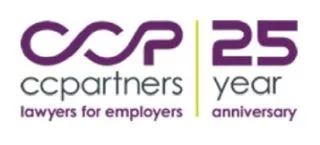There is perhaps no better time to be talking about workplace investigations as high profile cases of sexual harassment and poisoned work environment have pushed the issues into the public realm for debate and discussion. Never before have employers been under such scrutiny in the way they handle workplace conflict and conduct workplace investigations. As law makers, courts and tribunals attempt to keep up with the pace of public opinion, we see more and more workplace investigations being challenged. And with the recent introduction of Bill 132 by the Liberal government (click here for CCP's blog that provides an overview of the new legislation), employers will need to be more vigilant in how they handle harassment complaints in the workplace.
A recent Human Rights decision highlights the right way to investigate a complaint of harassment.
In Zambito v. LIUNA Local 183, 2015 HRTO 605 (CanLII) Ontario's Human Rights Tribunal dismissed an Application against an employer holding that it had reasonably discharged its duty to investigate a Code-based complaint. The Applicant made a complaint in accordance with the employer's policies, that he was harassed by virtue of his nationality and familial background. After he was laid off by the employer, he filed an Application under the Code in which he alleged that his employer had failed to properly investigate his complaint. The employer denied this, and said that it had conducted a thorough investigation.
The Applicant's internal complaint was given to the employer's in-house counsel to investigate. The Tribunal noted that this investigator did not know the Applicant, and that he had practiced labour and employment law for 20 years. The clear suggestion here is that this person was both neutral, skilled and competent. The Adjudicator described the internal investigator's work very positively, noting that the investigator took the following steps to respond to the complaint:
- Interviewed the Applicant;
- Interviewed the Respondent;
- Interviewed two eye witnesses to the exchange, and two other witnesses who saw the applicant's behaviour immediately after the incident;
- Completed his interviews within two and a half weeks of the incident; and
- Four weeks after the incident, had prepared (and saved) a written report that contained detailed findings of fact, an analysis and recommendations.
Employers should be considering the following issues when workplace conflict arises and/or allegations of harassment are asserted:
- Whether to investigate or not in the first place.This will depend on the nature of the conflict, whether formal complaints are filed and whether the issues can be resolved through more informal intervention by the employer.
- The objectivity of the investigator – an issue of contention in many of the decisions where investigations have been challenged.Should a third party be used or does the employer have a credible, trained employee who can carry out an impartial investigation?
- Is your investigation process fair? (does it provide for adequate notice and disclosure of relevant documents, an opportunity to be heard, an opportunity to know the case against a respondent, an opportunity to review notes/statements, an opportunity to know the outcome of the investigation, an opportunity to have union counsel/counsel present).
- The scope of the investigation – ensuring that the investigator does not stray from the original complaint.
- Whether findings of fact can be supported by the information gathered by the investigator.
- Timeliness of the investigation.
- Compliance with internal policies and statutory obligations.
- Whether or not to place employees on administrative leave pending the results of the investigation.
- Taking appropriate steps after the investigation has been completed.
The content of this article is intended to provide a general guide to the subject matter. Specialist advice should be sought about your specific circumstances.

